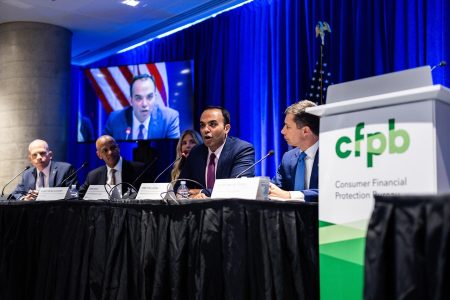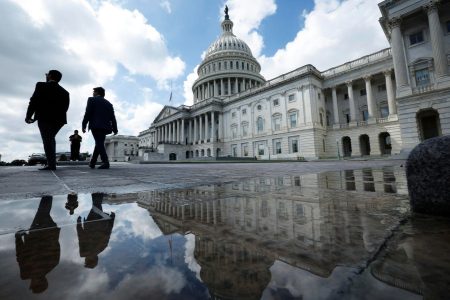A jaw-dropping report from the Global Financial Literacy Excellence Center reveals U.S. adults scored a mere 48% on the 2024 TIAA Institute-GFLEC Personal Finance Index. This alarming trend not only impedes personal growth, but employers are becoming increasingly aware of how knowledge deficiencies hinder organizational productivity as employees grapple with the distractions of financial stress.
Compounding this issue, a 2022 survey by the National Endowment for Financial Education revealed a staggering 35% of Americans confessed to merely “getting by financially,” haunted by the constant fear of depleting their resources. This unrelenting financial anxiety has tangible repercussions as 80% of employees reported at least some level of financial stress between 2021 and 2022, and an alarming 27% experienced high or overwhelming distress, according to Financial Finesse.
Given the significant impact of financial stress on both personal well-being and organizational productivity, it is imperative for employers to rethink and redesign financial wellness programs to be more personalized, engaging, and effective. By doing so, they can foster a more financially secure, productive, and loyal workforce, ultimately enhancing the overall success of their organizations.
The Problem With Traditional Financial Wellness Programs
While the importance of financial well-being in the workplace is widely acknowledged, a glaring disparity persists. Cerulli Associates recently found 71% of 401(k) plan sponsors adopt financial wellness programs. But the report noted most financial wellness products and services have usage rates below 20% among eligible participants, highlighting a critical gap between adoption and actual utilization.
This low participation rate is the primary reason many 401(k) plan sponsors decide not to offer a financial wellness program, according to Cerulli’s report. Traditional programs often fail to incorporate interactive, personalized, and accessible features that truly meet the needs of participants and achieve their intended outcomes.
Misaligned priorities among employers further exacerbate the problem. A Callan report highlights that while participation rate is the top criterion used to measure success among plan sponsors, participant education, communications, and retirement readiness rank seventh and eighth on their list of top areas of focus, with plan governance and process taking the top spot.
This disconnect between stated goals and prioritized actions underscores the need for a fundamental shift in how employers approach financial wellness initiatives.
A Shift In Workplace Financial Wellness
In the report, Cerulli analyst Elizabeth Chiffer emphasized that “financial wellness programs that are most effective should evolve to include guidance that provides users with actionable and achievable steps to take that will improve their financial life.”
“Financial education alone builds financial literacy, which is only one component of financial wellness,” Chiffer further noted. “Financial wellness programs must help users make positive financial decisions.”
Chiffer’s insights align with a report from PwC, which found 74% of employees want personalized guidance to help navigate financial decisions, crises or life events. They crave advice that considers their unique financial situations and provides clear, actionable steps to enhance their financial health.
The benefits of well-designed financial education programs extend far beyond individual employee well-being. A study published in the Journal of Financial Literacy and Wellbeing found such programs can recover at least one hour per week of productivity for each participating employee.
Justin Roberts, Amazon’s senior manager of financial benefits, attests to the exceptional value of the company’s comprehensive financial wellness program. “For every dollar we put into the program, the employee gets about $3 worth of value,” he told HR Executive.
In today’s competitive landscape, rethinking workplace financial wellness is not merely a nice-to-have option — it’s a strategic imperative that can lead to a more engaged, productive, and financially secure workforce. By addressing the shortcomings of traditional programs and embracing innovative, employee-centric solutions, employers can make a lasting positive impact on their employees’ lives and their organization’s success.
Implementing Effective Financial Wellness Programs
Employers have two main options to implement effective financial wellness programs: build an in-house program or partner with experts to create a customized program tailored to their employees’ demographics.
By shifting this burden to specialized benefits partners, employers can provide high-quality financial wellness support without overwhelming their own resources. Some providers even include these services as part of their standard fee, recognizing the mutual benefits of well-educated employees making sound financial decisions.
Financial wellness programs should be a priority for employers because they can serve as powerful attractors for top talent in a competitive labor market, and employers are catching on. A Bank of America study found 97% of employers feel responsible for employee financial wellness, with 91% seeing higher employee satisfaction when offering resources to manage overall well-being.
Additionally, these programs can enhance 401(k) plan participation, which improves nondiscrimination testing outcomes, ultimately leading to more satisfied employers who worry less about their contributions within the plan. Merely offering access to a content library is insufficient; employees need personalized, continuous guidance to navigate the overwhelming amount of financial information available through various channels such as search engines like Google, apps like TikTok and AI-driven advisors.
Successful financial wellness programs engage employees with consistent, digestible, and relatable guidance, helping them make small, impactful financial decisions. This hands-on support builds confidence and ensures that employees feel reassured and empowered in their financial journey, ultimately leading to long-term positive outcomes for both employees and employers.
In an era where financial stress and illiteracy are pervasive, rethinking workplace financial wellness programs is no longer an option — it’s a necessity. Programs should offer a range of topics and resources, from basic budgeting and debt management for entry-level employees to advanced investment strategies and retirement planning for more experienced professionals. By embracing innovative, personalized, and engaging approaches, employers can empower their employees to achieve financial well-being, fostering a more productive, engaged, and loyal workforce.
Ultimately, investing in the financial health of employees is an investment in the long-term success of the organization itself. It’s time for employers to embrace this paradigm shift and unlock the transformative potential of truly effective financial wellness programs.
Brian Menickella is the founder and managing partner at Beacon Financial Services, a broad-based financial advisory firm based in Wayne, PA.
Securities and Advisory services offered through LPL Financial, a registered investment advisor. Member FINRA/SIPC.
This material was created for educational and informational purposes only and is not intended as ERISA, tax, legal or investment advice.
Read the full article here
















